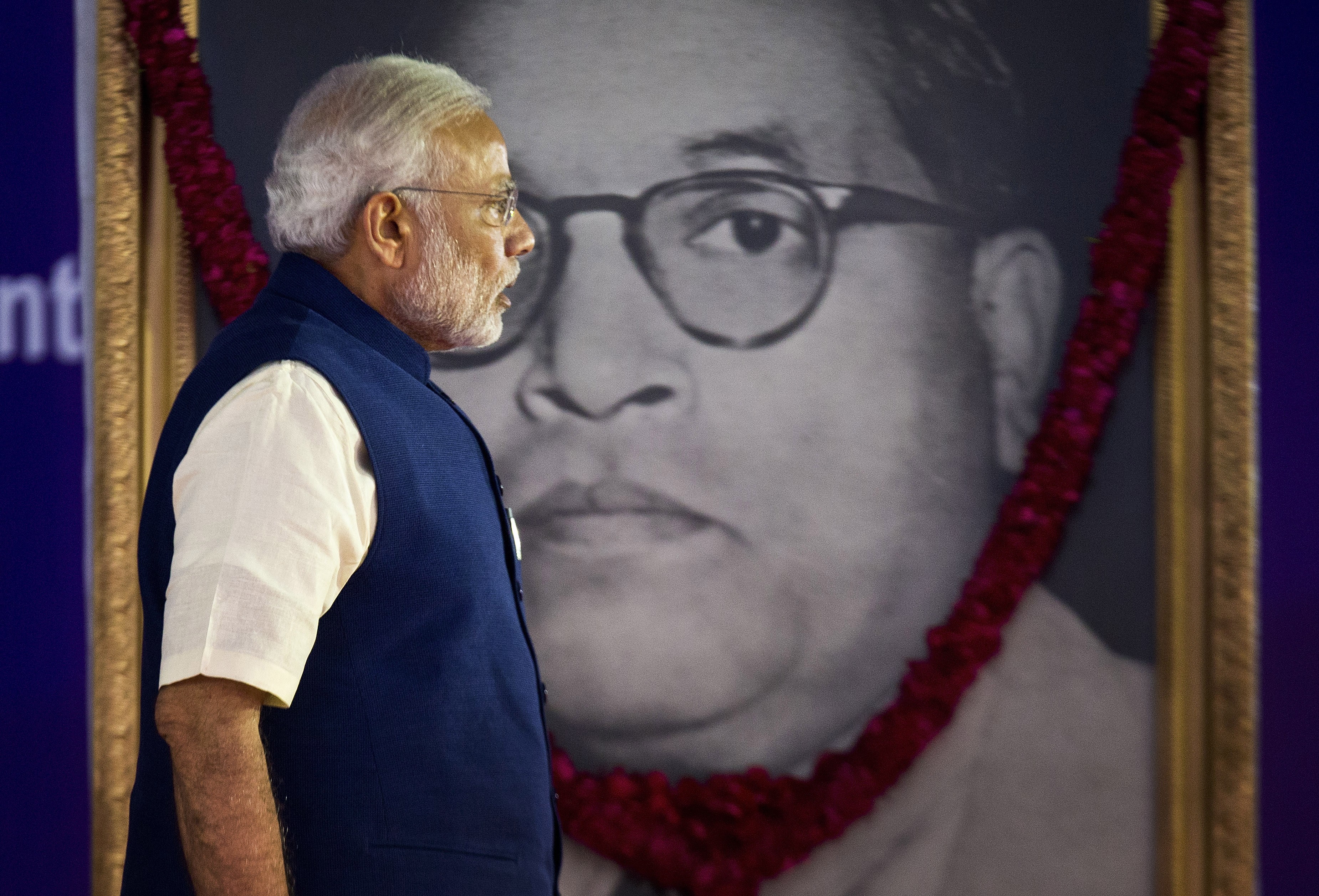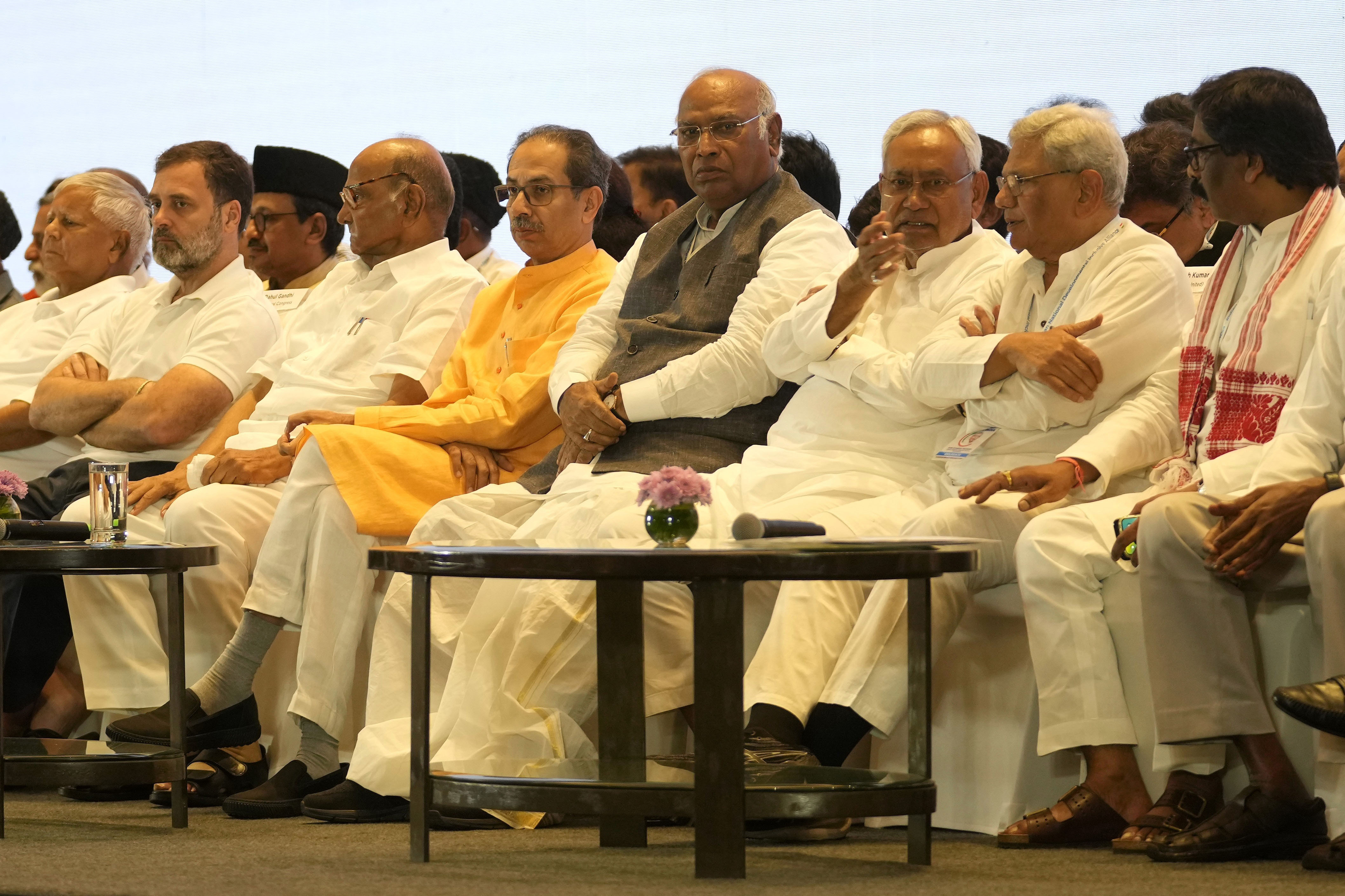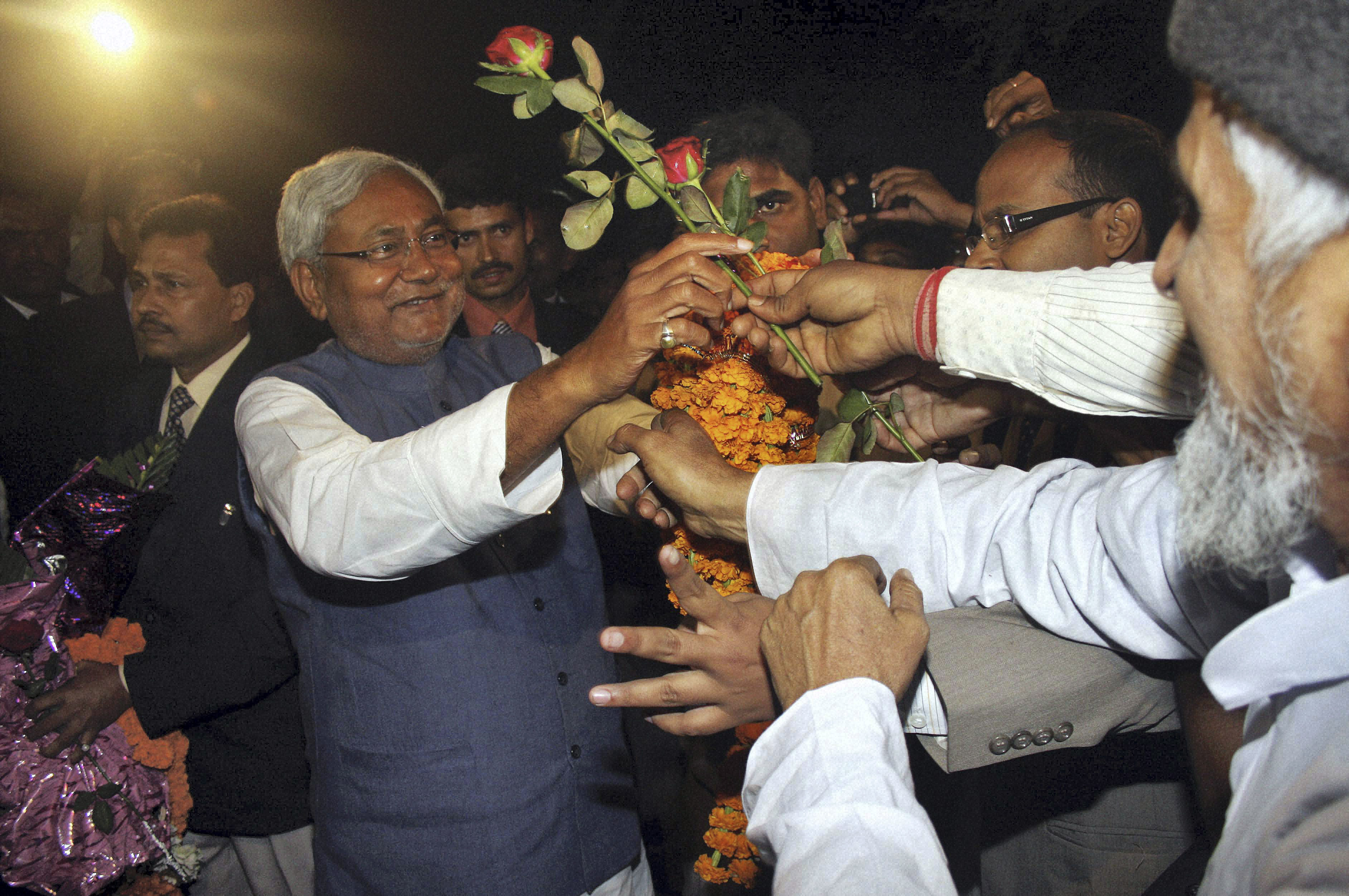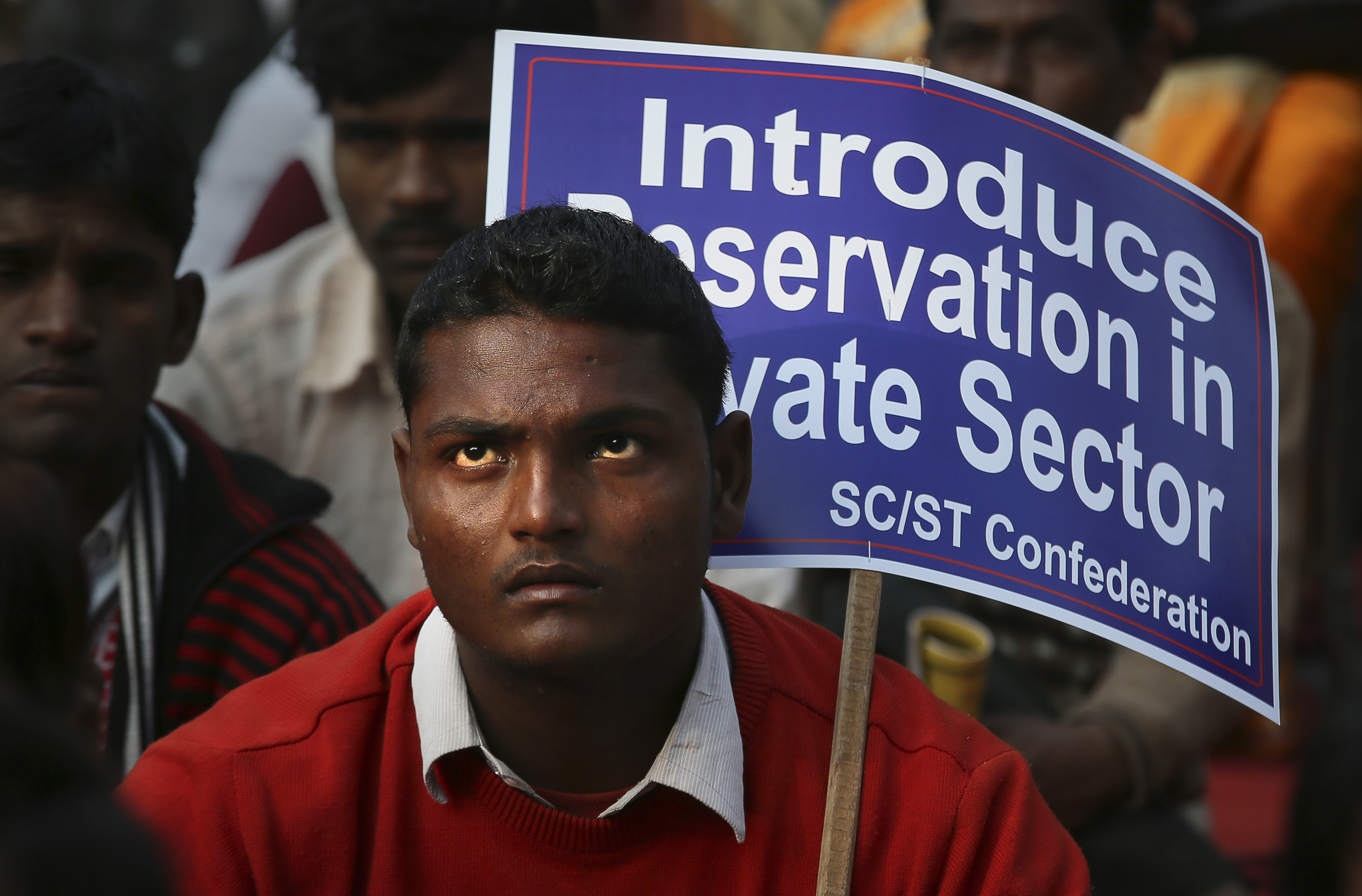
In a landmark move, the eastern Indian state of Bihar has announced the findings of the first-ever caste census since the country’s independence in 1947. The survey found that over two-thirds of the state’s population of over 130 million belonged to “backward” or marginalised communities.
As part of the decades-old government affirmative action, marginalised communities have been categorised as backward, extremely backward, scheduled caste (the former “untouchables”) and scheduled tribe (the Indigenous communities). India is one of the most unequal countries in the world with the bulk of the resources and jobs controlled by the privileged castes.
The findings from Bihar, one of India’s poorest yet politically significant states, have the potential to upend the country’s politics, with demands being made for a similar nationwide census, opening the doors for a revamp of the country’s affirmative action plans amid calls to grant proportional benefits to marginalised castes in line with their share of the population.
These demands, however, threaten to weaken Prime Minister Narendra Modi and his Hindu nationalist party, the Bharatiya Janata Party (BJP)’s hold over many of these marginalised castes, just months before the 2024 general elections.
What does the Bihar caste census show and why are its findings so significant?
While India’s majority Hindu community has been traditionally stratified into various castes, there has been no accurate data for decades now about the population of these castes and subcastes.

The last time a caste census was carried out was in 1931 when India was still under British colonial rule. The findings of a nationwide census in 2011 were never made public.
The lack of recent data meant affirmative action was insufficient and, often, misguided. For instance, the Bihar caste census data show that its dominant castes comprise just 15.5 percent, while its marginalised castes make up for a staggering 84 percent of the state’s population.
Despite this, affirmative action for these marginalised castes has been limited – only 50 percent of government jobs and educational opportunities are reserved for them.
Bihar’s move to make this data public is likely to trigger campaigns across the country from marginalised communities, to revisit affirmative action policies. In the process, these campaigns could cause political upheavals in the country.
What do the findings say about India’s social structure?
It has been known that India’s marginalised castes are disadvantaged and suffer from lack of opportunities. They suffer widespread discrimination as well as stigmatisation, though untouchability was abolished right after India gained independence.
The new data, while reiterating this, offer a glimpse into the massive scale of the problem. It goes a step towards reiterating that marginalised castes are the most dominant bloc in India’s social structure, and yet, remain deprived and discriminated against.
“The data reiterates how a small proportion of the dominant castes have occupied and controlled everything, from politics to its media to businesses,” said Yashwant Zagade, a research scholar studying politics of the backward castes, at the Tata Institute of Social Sciences (TISS).
India has emerged as the fifth largest economy in the world but the gap between richest and poorest people is huge. Oxfam India in its 2023 report said that 60 percent of the country’s wealth is held by the richest 5 percent of citizens.

Why are India’s opposition parties pushing for a nationwide caste census?
India’s opposition parties, part of a coalition called INDIA, have been pushing for a similar caste census to be carried out across the country.
After a decade of electoral marginalisation, the opposition parties are now trying to challenge BJP’s politics of Hindutva (Hindu-ness), highlighting the rising inequality and corporate control of resources.
Opposition leader from the Congress Party, Rahul Gandhi, has been repeatedly insisting on proportionate representation of marginalised communities in getting their due rights, as per their share of the population.
After having been criticised for failing to present an alternative vision for the country, the opposition parties seemed to have found their mojo, in taking on Modi and his BJP through this issue. An overwhelming majority of Indians belong to marginalised castes. A 2021 Pew survey had found this to be at 69 percent of India’s total population.
By championing their cause, the opposition alliance hopes to woo them, broaden its popular base and defeat the dominant BJP, which has won two comfortable majorities since 2014.
Secondly, Modi has been trying to blur caste lines and, instead, consolidate support for a unified Hindu identity, as part of his party’s Hindutva agenda that has polarised Indians along religious and ethnic lines. The BJP has been criticised for its dog whistle politics against Muslims who form about 15 percent of India’s 1.4 billion people.
The new caste-based movements threaten to derail these attempts, experts say.
“The demand for a caste census can create a new caste consciousness among the various marginalised castes and can threaten the BJP’s Hindutva project,” said Zagade. “If caste becomes the central issue, it will push Hindutva away,” he added.

Does this development pose a threat to Modi and his party’s dominance?
In its dominance over the last decade, Modi’s BJP has sought to create a diverse voter base among Hindus, consisting of both dominant and marginalised castes, including tribals and Dalits.
Modi, himself belonging to a “backward caste” community, has reiterated his caste identity in public meetings to draw in support.
However, an opposition campaign to push for greater rights for India’s marginalised castes could see Modi’s support base cracking.
“In the 2022 elections in Uttar Pradesh, Modi’s other backward caste (OBC) vote declined. Hence, the BJP will be worried that this new development could fracture its vote further,” said Sudha Pai, political scientist and author of a new book that studies the BJP’s grip over Dalit politics. Dalits, the former untouchables, lie at the bottom of the complex Hindu caste hierarchy.
History might worry Modi and his aides, too. In the early 1990s, the BJP’s attempts to come to power through a communally-charged campaign to build a temple at the purported site of the birth of Hindu god Ram was undercut by the Mandal movement, which demanded greater opportunities and affirmative action for OBCs.
The Mandal movement denied the BJP power for at least a decade. The opposition parties are hoping for an encore. As a result, while most other parties, including some of the BJP’s allies, have pushed for a national caste census, the BJP has remained shy of embracing this demand.
Modi, on the day the findings of the census were revealed, the opposition parties of “committing the sin” of “dividing the country on caste lines”.
Will the issue of caste-based census make caste a central point in Indian politics?
Most observers believe it is too early to tell how the issue will pan out, but either way, caste identities will be “one of the major poles” in the 2024 general elections when India elects a new government, said Pai.
Zagade, the scholar, said that while the opposition parties seem keen to make a nationwide caste census their principal point of campaign, their efforts on the ground will decide whether it strikes a chord with intended beneficiaries.
“Political parties will have to build the momentum on the issue, create an awareness among voters about how such caste data could benefit them,” he added.
Experts believe a data-driven conversation around caste will enable a rightful distribution of resources and opportunities to those who need it the most.
“Thanks to these conversations, we will see more welfare programmes for the backward castes, more budgetary allocations for them,” Pai added.







